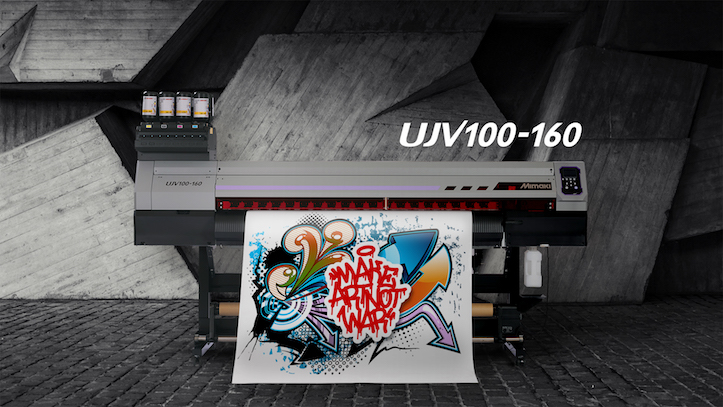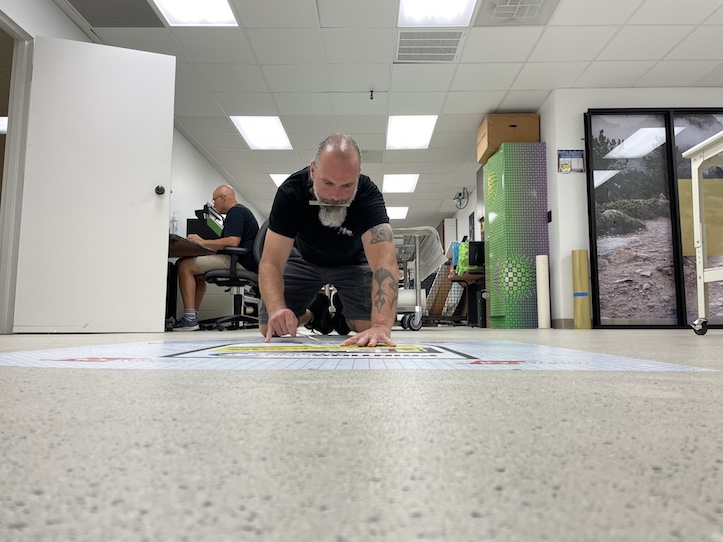"Sustainability is becoming more and more of an obligation and commiment and we are proud to be part of the movement! Heytex has listened to the wishes of our customers and made its ecotex® product line - the PVC-free textile outdoor alternative - climate neutral.
Sidebar
Knowledge base


Are you adapting with textile production’s sustainable evolution?
By Axel Stuhlreiter, Head of Textile Solutions, Ricoh Graphic Communications, Ricoh Europe
It will surprise no-one that the fashion industry makes a sizeable contribution to climate change.

Industrial inkjet printing – fully digital or hybrid?
Quite often, ink performance in industrial inkjet print production is improved by using primer and/or varnish. But should you opt for a fully digital process, jetting all fluids in one go, or for a hybrid process that combines inkjet printing with an analog coating or printing technology?
Inkjet takes market share as innovation quickens in $40.98 billion global signage print market, Smithers data show
Print output for wide-format and other signage applications are recovering from a downturn at the beginning of the decade. The outlook is still challenging however, as new priorities are established in printed advertising, point-of-sale (PoS) signage, posters, decals, and vehicle graphics.

Six best practices for direct mail
By Dimitri Van Gaever
Sending out a direct mail is always a bit of a gamble. As is any type of marketing campaign, for that matter. Still, direct mail is a tried-and-tested means to boost sales that tends to come with a great ROI, provided you know the rules of the game. Or, better said, the best practices. Not quite sure what the best practices for direct mail are? We’ve got six of them all lined up for you to explore.

The growing importance of track & trace in the packaging industry
By Danny Mertens
Track & trace technology enables brand owners to track their products at all times, while also protecting units against counterfeiting. Due to its rising popularity with brand owners, it’s clear that this is a technology, capability label converters will have to invest in sooner or later. Fortunately, Xeikon digital printing technology already enables solutions that combine authentication, identification and track & trace capabilities. Every single product gets a unique identity that enables verification.
Keypoint Intelligence Assesses and Forecasts Global Digital Textile Printing Industry
Keypoint Intelligence announces the availability of the 2021-2026 Worldwide Digital Textile Forecast. The forecast includes devices, inks, and applications used in wide format roll-to-roll textile printers geared to fabric print manufacturing for garment/sportswear, home décor fabrics, and industrial textiles.

UV LED vs Latex – Should you rethink your ink?
By Mustafa Okanovic, Sr. Product Specialist, Mimaki Europe
Over the last decade, the adoption of digital printing has accelerated and this technology is even becoming a popular option for the future of industrial-scale printing. However, the best type of ink to use in this sector is still debated, and the decision depends largely on the factors you consider.

Are architectural films the new sexy?
Guest Authored by Ken Burns, President, Axis Graphics Installations.
In the graphic installation community, car, boat and motorcycle wraps have always been considered the “sexy" side of the industry. And who can deny it? But for me as a business owner, profits and shareholder distributions are two things that are very sexy to me.

Car Wrapping with Mimaki – Is UV the Cure?
With advancements in digital printing, Mimaki’s latest UV curable inks offer car wrappers a revolutionary new way to upgrade your ride.

Smithers identifies new opportunities in $5.10 billion aqueous printing inks market
Water-based inks and printing are an increasingly popular option in many market applications. When ink chemistry and performance can be optimised, they promise a safer, more sustainable alternative to solvent inks in print rooms, especially for packaging converters.






